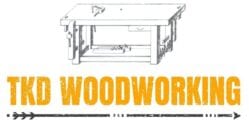End grain Charcuterie/Cutting boards are built to stand up to heavy use for many years. If you imagine wood as a series of straws running in a line, the end grain cutting board would be like setting a basket of straws up on their ends, compressed together. As you cut with a knife, instead of trying to cut the bunch of straws in half, your knife slips between the various straws, while the straws support what you are cutting. The knife dulls less, and the cutting board is self-healing, seldom showing knife marks!
A simple two-piece holder that can be kept or shipped flat, then slide the two pieces together.
- Mill the wood to size. Select a series of hardwoods (Cherry, Maple, Walnut, Purple Heart) and create strips 36” long, 1” thick, of various widths from 2-1/2” to 1”. Arrange these side by side in various order to make an artistic build. Glue it up with TiteBond 3 glue (food safe & waterproof).
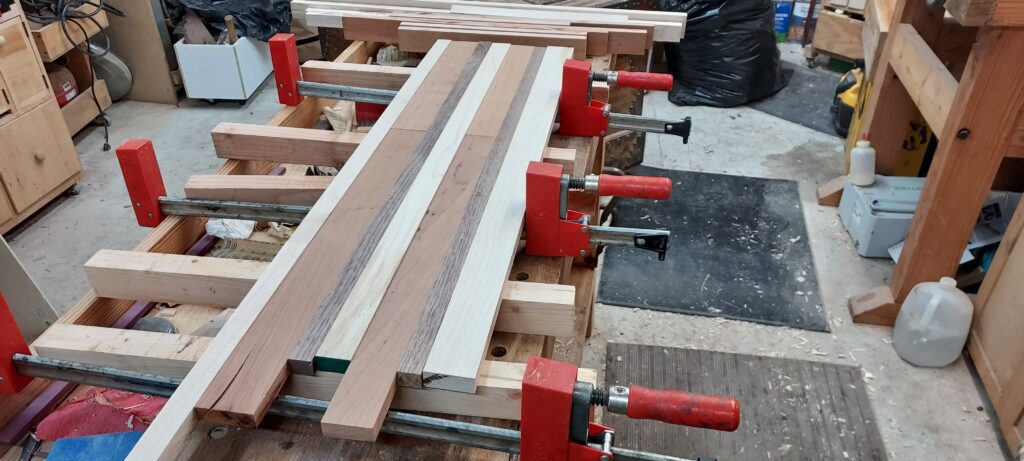
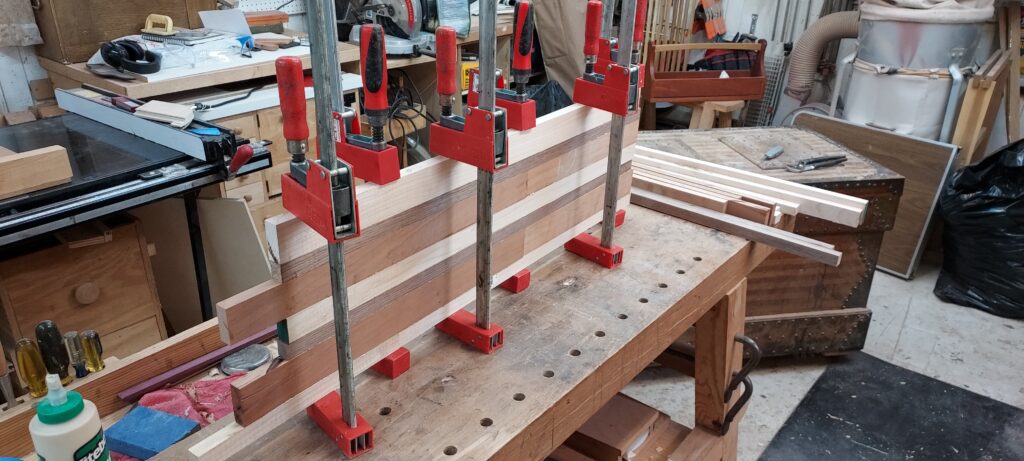
- Take these panels and crosscut them on the tablesaw to 1-1/4” widths. Arrange this for glue up on the workbench with the end grain facing up.
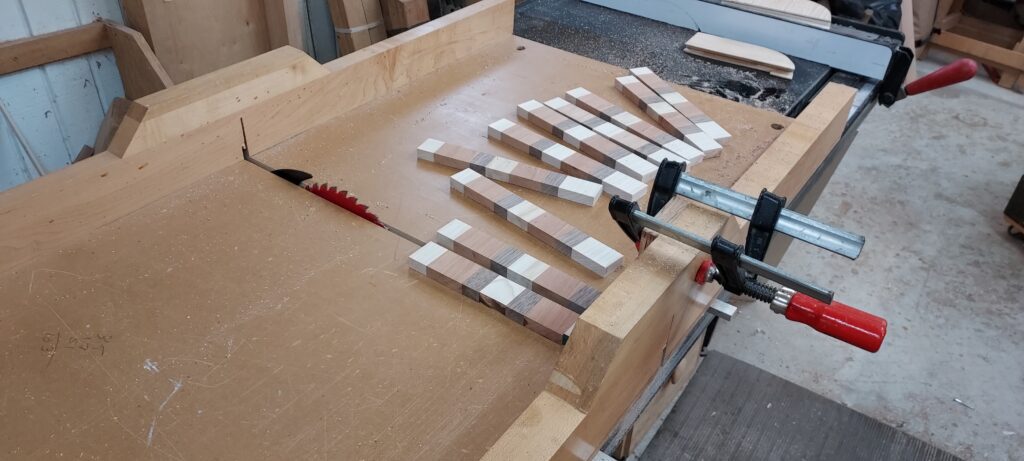
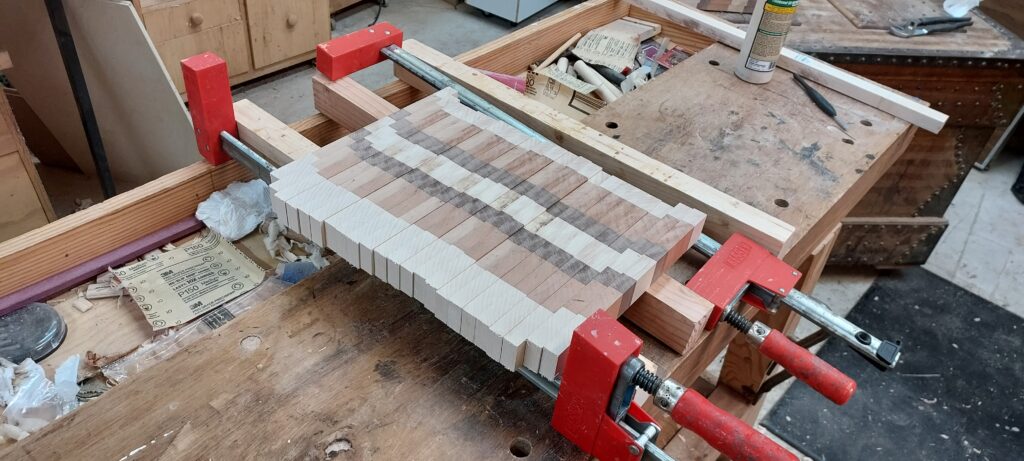
Now alternate every other piece, so they are opposite of each other. This creates an interesting pattern. Glue this up, again with Titebond 3 glue.
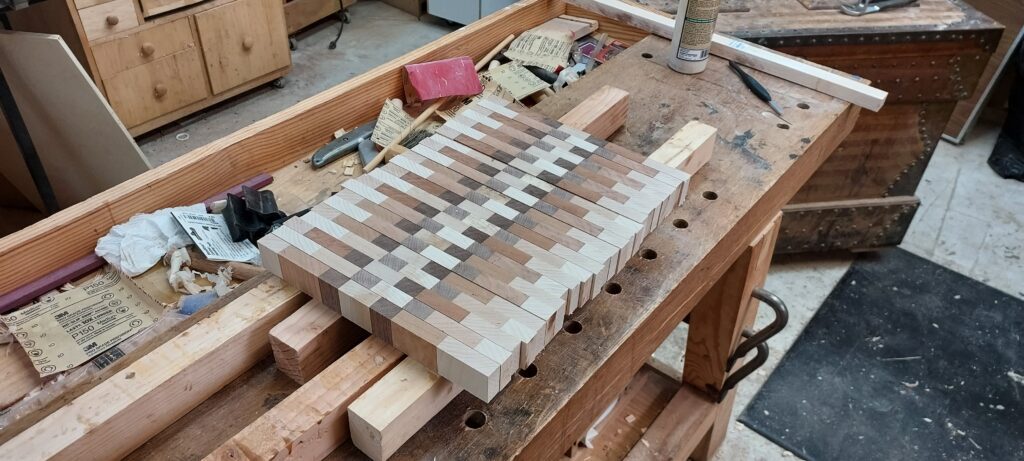
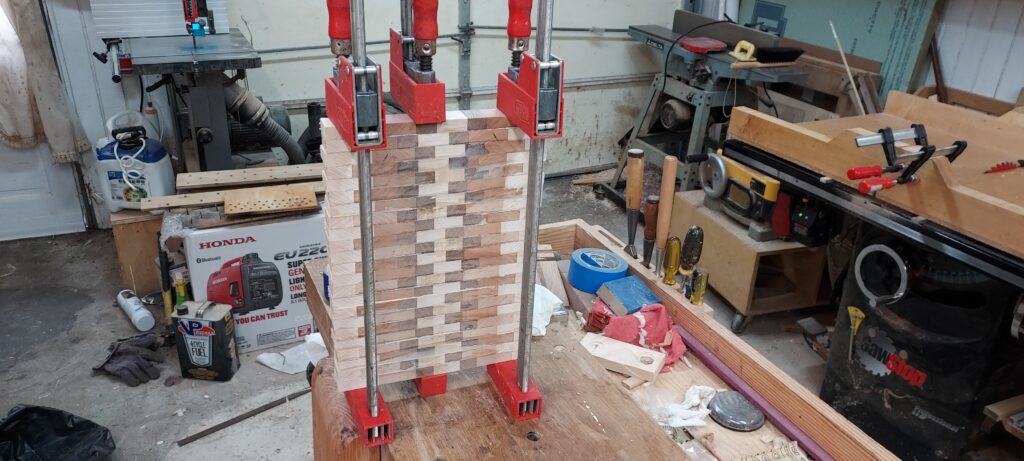
To complete this, plane/sand the board down to its finish thickness, round over the edges on the router table, and do final sanding. Finish with three coats of Cutting board Oil.

If requested, complete with rubber feet on the bottom of the board or a “juice groove” in the top.
When soiled, clean them with soap and water and set them to the side to dry (don’t machine wash them). Upkeep is simple, just rub them down with mineral oil from the supermarket every 6-12 months, depending on usage. All materials and finish used are food safe.
